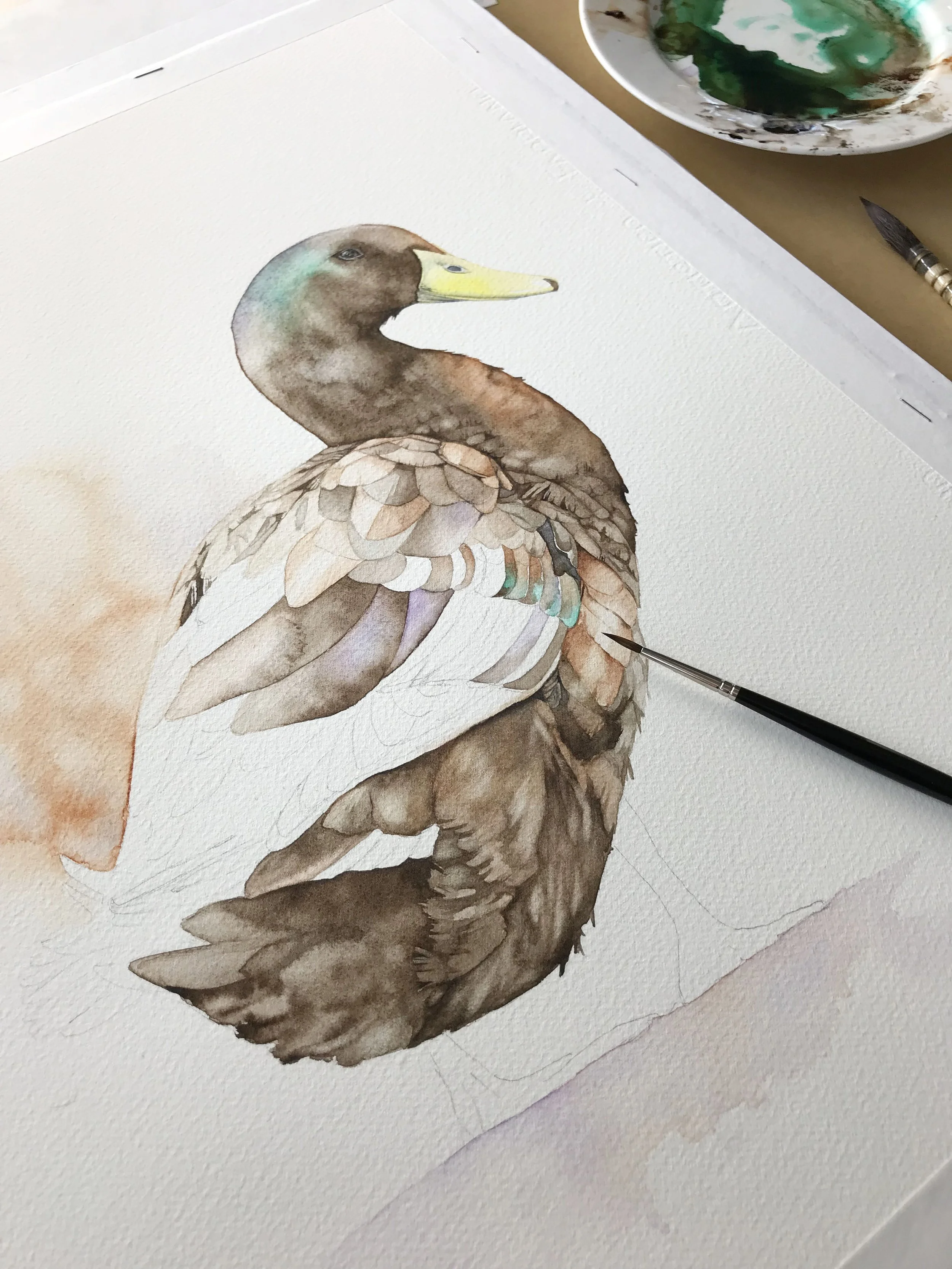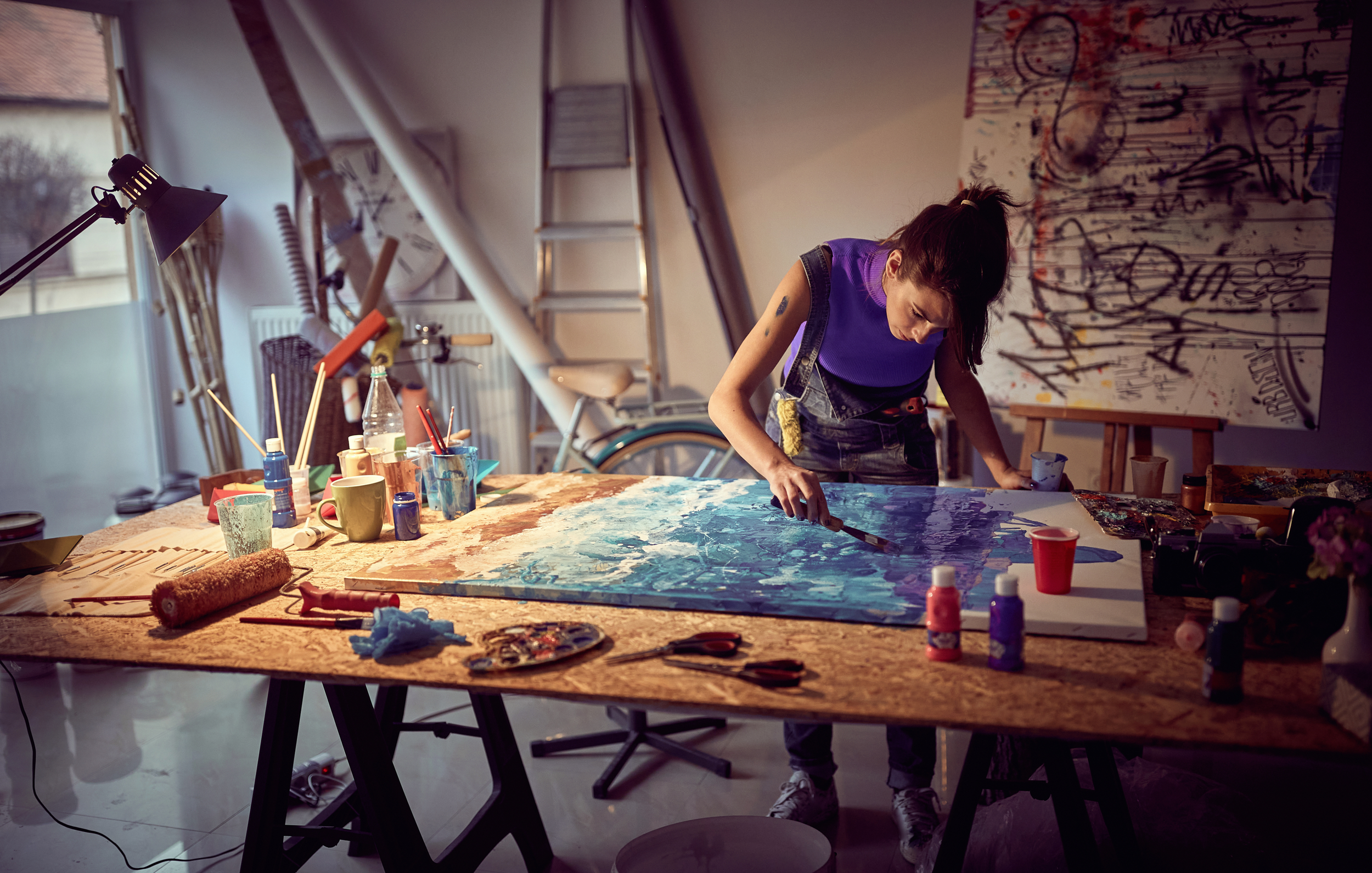Printing your watercolour artwork at home can be incredibly rewarding, whether you’re selling prints, making gifts, or just preserving your work. But if you want professional-quality results, you need the right printer, ink, and paper, otherwise your colours won’t be accurate, details will get lost, and prints might fade over time.
Read MoreI found Louise through a recommendation from an artist I followed on YouTube, and I was instantly hooked! My boyfriend later gifted me a Patreon subscription, and the rest is history. But I haven’t come here just to rave about Louise (though I could for days, honestly—just ask me!). I want to share a great experience I had attending my first in-person watercolour masterclass.
Read MoreCreating art prints is one of the most empowering ways for artists to share their work with a broader audience, making your art more accessible, impactful, and sustainable. While the artistic process is often deeply personal, prints allow your creations to reach more people, enhancing both your artistic journey and your professional growth. Here are some compelling reasons to consider making prints of your work.
Read MoreOne of the greatest perks of watercolour? Every “mistake” can be passed off as an artistic decision. Smudge? Intentional atmospheric effect. Drip? A touch of spontaneity. The freedom to turn mishaps into masterpieces is a liberating experience. Next time someone asks about that odd blotch, just smile and say, “Oh, you wouldn’t get it.”
Read MoreValue contrast refers to the difference in lightness and darkness between colours. It is one of the most critical aspects of colour contrast because our eyes are highly sensitive to variations in value. High value contrast can create a striking effect, drawing attention to particular areas of an artwork.
For instance, a dark object against a light background will stand out prominently, making it the focal point of the composition. This principle is often used in chiaroscuro, a technique that employs strong contrasts between light and dark to give the illusion of volume in modelling three-dimensional objects and figures.
Read MoreThe easiest way to tell whether a watercolour pigment is granulating is to look at a colour chart of the paints you use. The paint manufacturers indicate on their charts whether a pigment is granulating or not. You can buy the charts or you can go online and download them from the paint manufacturer's website.
Read MoreBy mastering analogous colour schemes, you can enhance the emotional depth of your art, creating compositions that soothe and resonate with viewers. This knowledge complements our ongoing journey through colour theory, equipping you with the skills to craft harmonious and cohesive artworks.
Read MoreImagine a red Waratah surrounded by lush green leaves. This combination of contrasting colours doesn’t just draw the eye; it evokes feelings of vitality and passion. The red symbolises energy and life, while the green offers a grounding balance, making this pair perfect for capturing the essence of nature's exuberance.
Read MoreEach colour has unique psychological effects and can influence mood, often triggering specific emotions and behaviours. Here are some common associations:
Red: Often linked with passion, excitement, and energy, red can increase heart rate and create a sense of urgency. This makes it a popular choice in marketing to attract attention or in dining areas to stimulate appetite. Red light, in particular, has been shown to raise blood pressure and increase heart rate, making it a stimulating colour.
Read MoreColour harmony is about creating a visual experience that is pleasing to the eye and resonates with the soul. It’s about balance and beauty, using the colour wheel to create relationships that enhance the overall effect of your work. A well-chosen colour palette is essential in achieving harmonious colour schemes, as it helps in selecting colours that work well together and evoke the desired emotional response.
Read MoreMake something new every single day. It doesn’t have to be a masterpiece. Art is simply a practice. It’s a journey that’s filled with amazing insights and unique reveals along the way. Sometimes, you’ll create something amazing and other times, not so much. The goal should always be to simply show up and create.
Read MoreMonet's "Woman with a Parasol" (although not a watercolour painting) is a perfect example of the Impressionist painting style, showcasing the artist's mastery in capturing the fleeting effects of light and atmosphere. This piece of visual art, created by one of the most famous artists of the 19th century, depicts an elegant figure against a vibrant, dynamically brushed sky, capturing the quick movement and immediate feelings that are important to Impressionist art.
Read MoreFor me, signing artwork is important. It is a meaningful step in your artistic journey. It’s your seal of authenticity, a sign that the piece you've created is an original and a true reflection of your talent. This becomes especially important in the art market, where the distinction between an original piece and a reproduction can significantly impact the value of the artwork.
Read MoreIn the enchanting world of watercolour painting, we artists often play a delightful game of spotlight with our subjects. Some objects in our paintings are the stars of the show, boldly stepping into the foreground, basking in the spotlight, and captivating the viewer's gaze with their vivid charm. They're the showstoppers, the ones that catch your eye and refuse to let go.
Meanwhile, other elements in our artwork prefer a more subtle role, gracefully receding into the background. They're like the whispers behind the main melody, softer, a tad fuzzy, and less vibrant.
Read MoreThere is no debate about it, art business in Australia is booming. Each year, thousands of established and emerging artists create and sell their work. Recent estimates suggest that the art industry in Australia contributes around $15 billion a year to the economy. In 2020 alone, Australia's major auction houses sold $108 million worth of artworks thanks to increased demand from buyers. What these figures show is that there are plenty of opportunities for aspiring artists to make a living from their work. And thanks to the advent of digital platforms, it is now easier than ever to connect with potential buyers from around the world.
Read More













